Miguel
Belló-Mora.
General Manager of Elecnor Deimos
Madrid - SpainTechnical
Miguel Belló-Mora was born in Puertollano (Ciudad Real) in 1961 and graduated as an Aeronautical Engineer at the Polytechnic University of Madrid. He obtained a doctorate in Aerospace Engineering at the Braunschweig University in Germany, whilst he was working with the European Space Agency from 1985 to 1992.
On his return to Spain, he continued to work on matters related to the space sector, an area in which shortly, he will have been involved for three decades. He also studied business management through the General Management programme of IESE, which enabled him to add business management studies to his professional technical profile.
In 2001, in a fairly “untypical” fashion, as he points out himself, “a group of friends that were working in the aerospace sector decided to found Deimos Space, thinking, above all, in the company in which they would like to work”.
Very soon after, Elecnor acquired a share of the equity; first of all, with a 50.5% participation and later, taking over 100% and creating Elecnor Deimos. They are now completely integrated within the Group and maintain some of the original ideas, such as the value of the individual: “we want the people who work here to enjoy what they do. We are delighted to be a part of Elecnor”.
Last October 19th, Belló-Mora was elected as a member of the International Academy of Astronautics at the 62nd International Astronautical Congress held in Cape Town (South Africa), an appointment of which he is very proud since “you are elected by your colleagues”. “The world of space is not very large - he adds- perhaps it is one of the institutions of which I am most proud to be a member when I see who has been and who is in their ranks since it was founded in 1960”.

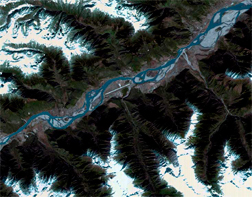


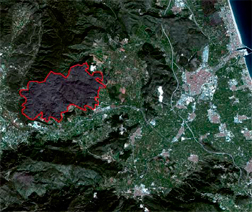
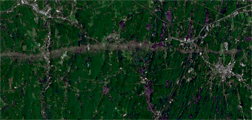

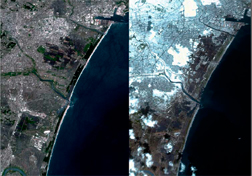
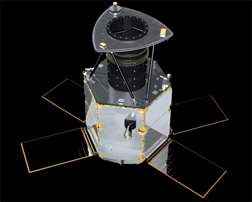
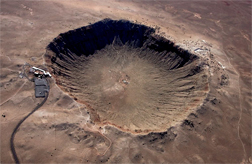
“The relationship between technology and insurance is very close”
Elecnor Deimos is the technological division of The Elecnor Group. Having embarked on an ambitious internationalization programme, the company is involved in important projects in the space sector, the field of communications or mobility. In 2009, Deimos 1, the first European satellite, with entirely private capital, was launched for Earth observation and they hope to repeat this success in 2013 with the launch of Deimos 2. Until then, they will continue to fight against the asteroids or to achieve a satellite navigation system in Europe.
What companies do form part of Elecnor Deimos and what does each one do?
Elecnor is a longstanding company which has existed for over 50 years. Basically, it embraces four business lines. The first one covers the area of Infrastructures; the second pillar covers everything related to Concessions; the third is the business based on Renewables; and the fourth is the Technological one, grouped within Elecnor Deimos, which embraces the businesses of space, aeronautics, networks and technological infrastructures. We are, therefore, one of the four pillars within the group and specifically, we are their technological area. There are also numerous companies and subsidiaries that revolve around this structure.
There is nothing more global or universal than work in space
Elecnor Deimos has set itself the goal of continuous and sustained growth and becoming a large multinational corporation before 2015. Where do you currently find yourselves in respect of this objective?
Internationalization is fundamental for us and especially now that the Spanish market is shrinking. That is why we have backed this model, and even more so in a profession such as ours: there is nothing more global or universal than work in space.
We have various milestones in our plan and by 2015 we aim to reach a significant level of internationalization. At the moment, we are on schedule with our initial programme. Although the economic environment is not the most favourable, we continue to grow and this year we expect 20% growth.
Innovation, corporate excellence and both environmental and social commitment are the principles that govern the activities of Elecnor Deimos. Can you give us some examples of how these values are applied?
Innovation in a technological company is a sine qua non condition. For example, we have the first Spanish satellite for Earth observation and, next year, we are going to launch a new one metre satellite solution from a small platform; something that has not been done up until now. At the same time, we have a commitment as a company that goes further than maintaining ourselves or making a profit, and that is to destine 5% of our production to aid in the event of natural disasters anywhere in the world.
An innovative sector
“The insurance sector is tremendously innovative and it has always been a driving force for new technologies”, Belló declares and, by way of example, says “when insuring satellites, insurers need to have an in-depth knowledge of the business, almost more than the technicians, in order to evaluate the risks”.
At Elecnor Deimos, various lines for cooperation and services for Insurance have been identified. “We are already working on one of them: Agroseguro, since the best and quickest way of carrying out loss adjustments in rural areas is by satellite. The same occurs when an indemnity has to be calculated and one has to be sure of the damage”. Its application is also essential in the process of risk analysis. “That is to say, it is not just, after the event, when a claim occurs, that an insurer can obtain great help from these tools but also, before the event, to obtain information on the risks that are going to be insured”.
For Elecnor Deimos, the insurance sector is a fundamental client “with which we have been cooperating for several years and we are sure that this cooperation will be even greater in the future. The Earth observation sector is emerging and will be increasingly applicable in insurance. The relationship between technology and insurance is very close”.
Projects and initiatives
Elecnor Deimos is the most visible company within PERIGEO which was one of the seven projects selected by the CDTI1 (Center for the Industrial Technological Development) at the end of last year. What will the contribution of your group be to this project?
Indeed, we are one of the leaders of PERIGEO, although there are other companies and universities, in the Consortium. As experts in planetary landings, in Elecnor Deimos, we are working hard on methods for landing on the moon or on planets such as Mars. We are going to carry out tests on Earth, with an unmanned aerial vehicle, the algorithms that detect the planetary surface, whether there are risks and what decision to take. It is a question of simulating a planetary landing on a perfect platform, developing GNC algorithms, which is an important system since it is the brain of satellites or launchers. In short, PERIGEO is a project to develop advanced GNC techniques where Spain has an important technological niche.
You also play a key role in Galileo, the EU satellite navigation system. What does this project mean to you? What are you working on at the moment?
Galileo is fundamental for us. It is the European investment for the future for navigation by satellite, because we cannot depend on a system such as GPS which is a great system; it works incredibly well, but is owned by the U.S. Ministry of Defence. For this reason, we have no guarantee that tomorrow it might not be switched off. Europe cannot be dependant technologically for something so important and Galileo has been proposed as a means of acquiring independence. However, there have been delays for political, not technical reasons. Fortunately, there is a budgetary framework for Galileo to be operative and the initial demonstration satellites are already in orbit and they could even be available for certain services by 2014. At last, the project is underway and it will guarantee the availability of a system which controls the key, because there is a commitment that it will not be switched off.
Innovation in a technological company is a sine qua non condition
In this project, Elecnor Deimos is involved fundamentally with Ground systems where we have won three important tenders. The first, and perhaps the most important is called “MGF” (Message Generation Facility), and we are going to develop the unit on software which calculates the navigation messages to be sent to the satellite in real time, and it can never fail. We have also been awarded another project called ‘RDG’ (Raw Data Generator), to create a constellation simulator; and the third large project is the ‘MSF’ (Mission Support Facility), which provides extremely precise orbit and clock calculations. Moreover, apart from these systems, we are also making Galileo receivers, amongst which we already have a simulator called “Granada”.
The first private European satellite
In July of 2009, Elecnor Deimos launched Deimos 1, the first European satellite for observation of the Earth with entirely private capital. It was a big gamble, according to Belló, “there were a lot of people watching us because Earth observation satellites have been fundamentally institutional, without a profit and loss account to respond for”. Only in the USA had two companies taken this step but that was with a large client backing them: The Pentagon. “For that reason, there were a lot of people wondering whether Deimos 1 would work or not and the truth is that it has been a triumph. We have provided a profit and so far, everything is working out very well”.
Belló emphasizes that technically, the project has been a success. “Such a small satellite -it weighs less than 100 kilos and is hardly a metre in length- provides us every day with almost 4 million kilometres of images in high resolution”. But not only that, “putting a satellite into orbit, at 28,000 kilometres per hour, that we can communicate with it every day and that it has been functioning for two years without any problems, is a considerable achievement but moreover, applications have been added that work very well for agriculture, the environment, climatic change and insurance. What we give our end client is not a more or less pretty picture but rather a product”.
A new satellite is scheduled to be launched in 2013: Deimos 2, with higher resolution (400 times more), greater output and size than its predecessor. It is a very important “leap” for Belló, “nobody before had put a metre of resolution into 300 kilos and we think that it is feasible and that it will work well”. In addition, there is another revealing aspect: the satellite has been integrated within their installations in Puertollano, “taking a new step in the value chain for the Earth´s observation”.
In general, what plans or projects do you have for the other sectors in which you have a presence?
We need to create awareness so that space is not contaminated
There are many. For example, in Systems and Networks we have locating systems and curious projects such as one we are offering for locating 1,200,000 camels in Mauritania. We are also working with ADIF2 in developing systems for controlling the handling of trains, information for passengers at stations. At the same time, we have a large team for Mobility and, in fact, we are leading a project called “España Virtual” to define the future of Internet: with increased virtual reality projects.We have been very creative in transferring the technology of space to all sectors.
We also have a very important Control division with SCADA3 systems for the control of energy and water through which we are working a lot for AENA4. At the same time, we have technology infrastructures which are very linked to building control, that is to say, IP network systems on which we set up access control, video and communications. We have also carried out several Security projects such as for the America Cup, where we had to install sonar to protect the Port of Valencia.
Space debris
Last September, the world was waiting to see what would happen with the UARS5 satellite. Can space debris be avoided?
The subject of space debris is very complex. We need to create awareness so that space is not contaminated. There are many projects for direct clean-up but the cost is very high and they would only be effective for eliminating one, two or three “pieces of junk” at the most and there are 16,000 registered!
There are especially complicated zones: geostationary, where we can find around 5,000 the low Earth orbit where there are around 12,000. In this case, the solution involves burning them in the atmosphere; to design the satellites, so that after a certain time they burn, but being very careful: at 200 kilometres they burn in three days; at 400, in 4 months, but at 600-800 kilometres they take decades and those that are 1,000 kilometres, millenniums.
In geostationary, on the other hand, you cannot burn in the atmosphere because it is so far away that it is very expensive. An “orbit cemetery” has been created where satellites can stay for some 3,000-4,000 years without bothering and we hope that by then, the problem will be solved.
The idea is that at the end of their useful life the satellites will have enough fuel to allow them to manoeuvre and bury them there. However, it is very expensive and there are many third world countries that are not doing it.
By participating in the international consortium, Booster6, Elecnor Deimos has decided to participate in the space tourism race. Why did you decide to take this step?
The Earth observation sector is emerging and will be increasingly applicable in insurance
Our future is in space and we are convinced that sooner or later, we are going to end up on Mars or the moon. Anyone is going to be able to go into space and what we want is that it should be sooner rather than later. The Booster project is very attractive. A Belgian company presented us with the idea and we loved it. We form part of a consortium of companies: Germans, French, amongst others. Elecnor Deimos and Aernova are the Spanish companies.
Nevertheless, we are faced with a difficult challenge: legislation. There is no regulatory framework for these flights and this is a serious problem: who certifies the vehicle? What licences do you need to travel into space? None of these things are regulated and this is a problem that is more serious than the technical problems that are already resolved. The economic crisis is another barrier because now it is more difficult to find finance.
Don Quixote fights against the asteroids
The European Space Agency (ESA) has chosen the Elecnor Deimos “Don Quixote” space mission to defend Earth against possible impacts from asteroids. According to Belló, “for many years nobody was concerned about them but the Hollywood script writers have helped a lot. It is a problem that does exist. There can be no doubt that a large asteroid can crash into Earth. It has happened and it will happen again; it is pure mathematics and the question is when, tomorrow or in 30 million years time”.
One thing is in our favour, says the General Manager of Elecnor Deimos, “4/5ths of the world is ocean, so the probability of it falling there is very high”. Currently, an asteroid of around 300 metres called Apofis has been identified which will pass close to Earth in 2029. “We know that it is not going to crash into our planet but as it has orbital resonance, it will visit us again in 2036 when the probability is 1 in 50,000 and therefore, it has to be monitored”.
“What should be done about the asteroids?” Belló asks. “First of all, there has to be an important surveillance programme, which is already in operation and a data base has been created where small, medium and of course, large asteroids are registered. The large or, so-called, “Killer asteroids” are those that can destroy a continent or the whole world. Although this is not going to happen tomorrow, why not have the technology ready now?”
In Don Quixote, “we intend to launch two probes, one to observe the asteroid, its mutation, what the surface is like and its field of gravity; and a second probe which will reach a high speed and crash into it, moving it with the impact. We presented this idea in a European open tender, which we were awarded against all predictions and hence, it has become the ESA mission to fight against the asteroids”.
1 CDTI: Centro para el Desarrollo Tecnológico Industrial (Center for the Industrial Technological Development). It is a public company under the authority of the Ministry of Economy and Competitiveness http://www.cdti.es/
2 ADIF: Administrador de Infraestructuras Ferroviarias (Railway infrastructures administrator)
3 SCADA: Supervisory Control And Data Acquisition
4 AENA: Aeropuertos Españoles y Navegación Aérea (Spanish airports and aerial navigation)
5 UARS: Upper Atmosphere Research Satellite
6 http://boosterindustries.eu/



